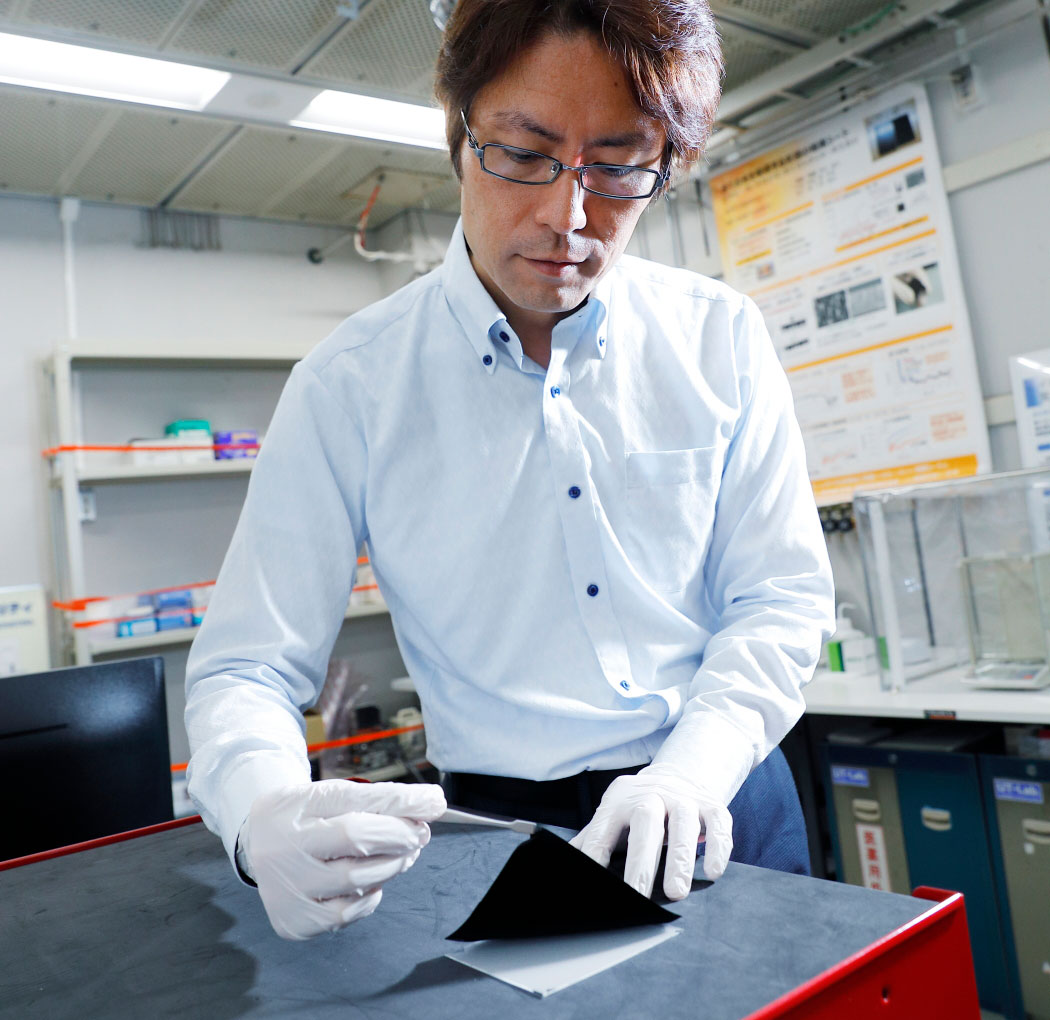National Metrology Institute of Japan
Near-Perfect Blackbody Sheet That Absorbs Essentially All Light
AMEMIYA Kuniaki
Research Institute for Physical Measurement
Update(MM/DD/YYYY):12/24/2020
World's first blackbody material combining high light absorptance and durability
A flexible blackbody sheet with excellent durability was developed that traps light over a wide spectral range from ultraviolet to visible and infrared wavelengths in the microtextured surface structure formed on a material such as silicone rubber.
 |
| Left: Developed blackbody sheet Right: SEM image of the light-trapping surface structure |
Seeking the ultimate black: Durability has been the challenge, amid competitive development in precision measurement and applications of light
Black materials are widely used in the fields of solar energy, light sensors, thermal radiators, and other applications of light. Especially in applications such as preventing diffuse reflections in cameras and eliminating stray light in spectrometers, black materials that absorb nearly 100 % of light are required. Photometry and radiometry standards have been established at AIST by detecting all incident light on extremely black light absorbers. To date, the world's blackest materials ever developed absorb more than 99.9 % of visible light. However, their durability has been poor; their performance declines if the surface is touched, and the required special handling makes them difficult to use in ordinary environments.
Trapping light in a microtextured surface transferred from an ion-etched template
The researcher conducted research and development on a new light-absorbing material that absorbs light of a wide wavelength range and is also more durable. As a result, the researcher found that light absorption can be maximized by creating a microtextured structure on the surface of a durable material and optimizing the texture geometry such as the sharpness and size of the pits and spikes. To create the light-trapping structure, a cyclotron accelerator was used; ion beam irradiation on a polymer substrate and the following chemical etching form a large number of fine conical cavities on the surface. A blackbody sheet was produced by transferring the pattern of pits and spikes from this template to the surface of a silicone rubber sheet with carbon black filler. The blackbody sheet absorbs more than 99.5 % of light over ultraviolet, visible, and infrared wavelengths. In particular, it showed the world's highest level of absorption for the thermal infrared region, at 99.9 % or more. It was also found that the blackbody sheet exhibits the flexibility of silicone rubber and maintains high light absorption against touched or bended.

Seeking the world's darkest blackbody, hoping to expand industrial applications and help solve social challenges
The researcher will be working toward absorption of 99.9 % or more in the visible light region. This will contribute to the advance of photometry and radiometry standards. The blackbody sheet can serve as an accurate reference infrared radiator for the radiation thermometric instruments, including thermography, that determine temperature from infrared radiation. This is because materials with high absorptance also have high emissivity. The researcher will also pursue research and development for practical adoption to facilitate widespread use in ordinary environments, utilizing the sheet's high durability and the ease of volume production in pattern-transfer manufacturing.
Contact
AMEMIYA Kuniaki
Leader, Group
Applied Optical Measurement Group, Research Institute for Physical Measurement
AIST Tsukuba Central 3, 1-1-1 Umezono, Tsukuba, Ibaraki 305-8563 Japan
E-mail: nmij-info-ml*aist.go.jp (Please convert “*” to “@”)